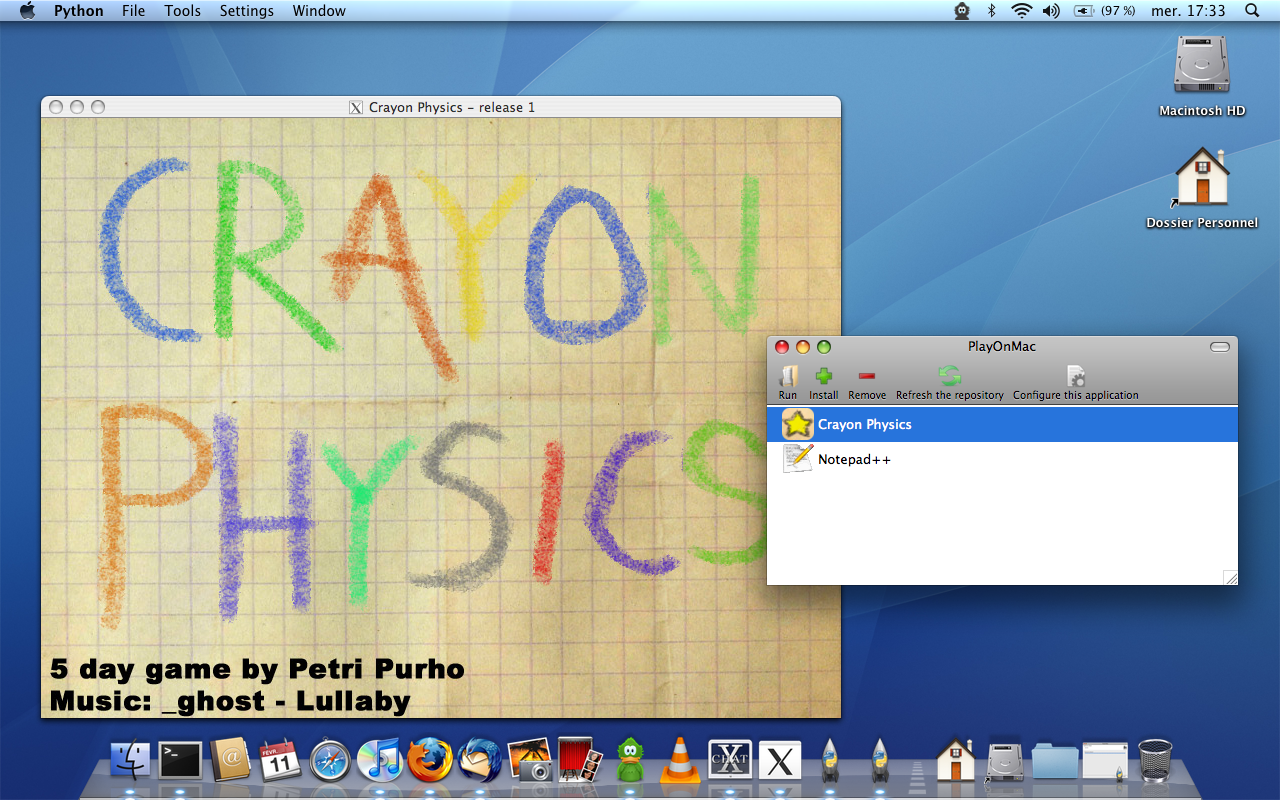

#Playonmac python windows
Instead of using the macOS Finder (or Windows Explorer), I prefer to use terminal commands to copy files from unreliable sources. This allowed me to optimise my strategy, directly attempting to copy the personal photos. But you must focus on recovering the most important files first! You don’t know how long the damaged disk will continue to work - it may die any second!Īs I am familiar with Apple Photos, I know where the (original) photo files are kept. You may be tempted to ‘click around’ and browse its contents. If the disk is not (entirely) defect, you might be able to read its contents using the other computer.
#Playonmac python mac
By using another Mac that I borrowed from my brother, I knew that the operating system would be able to understand the filesystem on the salvaged disk. Some file systems can be read by different operating systems, while others can’t. These file systems differ per operating system. Disks are formatted into data structures that comprise a “file system”. The best thing you can do is to connect the disk to a computer running the same operating system. Connecting the salvaged disk to another Mac I have used this strategy before to rescue photos from a broken laptop. This enables you to read from the disk, even if the operating system on the disk is broken. Using a standard SATA-to-USB convertor chip (that I once removed from an external hard disk’s enclosure) you can connect the disk to another computer. Connecting the disk to a SATA-to-USB convertor This chip is was originally part of a external USB disk drive - you might have one around that you can use for this If the computer contains valuable data, it can be a good idea to do an attempt to recover files. You can compare it to personal injury: although you cannot walk (easily) with a broken leg, you might still be able to move when you get a little help from someone. If you cannot get your computer to start any more, it does not necessarily mean that everything on it is lost! Very often (parts) of the computer’s memory are still functional. The hard disk inside the iMac - containing the personal photos Recovering photos from the hard disk After I removed it, I closed the iMac again to return it in its current condition. You can recognise it by its rectangular shape and green chip.

It’s an easy part to recognise, usually big and bulky. The iMac’s innards are visible after removing the displayįor my attempt to recover the personal photos from this iMac I was only interested in the hard disk. Once the display is removed you should have a clear view on the iMacs innards. Be careful as the display is connected to the main logic board with multiple cables. Once the screws are removed you should be able to lift the display with your fingers. Be careful when lifting the display as it has multiple cables attached to the main logic board Take your time to do this as it can be a little tricky with the strong magnets close to the screw holes. You don’t want to hurt yourself! The display is fixed using Torx screws - it can be a little tricky to remove the screws as the magnets easily catch them!Īfter you have removed the glass panel you should be able to remove the display once you have removed all the Torx screws. Be careful with the glass panel to prevent it from cracking. You can remove the panel using suction caps. This particular iMac has a glass panel that is held on to the aluminium frame by (strong) magnets. Removing the glass panel using suction caps To recover lost files (and photos) you’ll need to find the hard disk (or SSD). It is the only way to access the components inside the computer. Some iMacs require a special cutting blade to cut through the adhesive tape holding the glass on to the Aluminium frameĭepending on the exact iMac model, you might need a special blade to remove the display from the enclosure. This often means trouble, as I have learned the hard way after some handy work on my own iMac.

The iMac did not boot any more, likely the result of an hardware failure as the standard Apple (software) recovery system did not work either. Crashed iMac on my desk - ready to be opened It’s a challenging computer when it comes to repair (and recovery).

All components are closely packed together using tiny screws, tape and magnets. The computer is integrated into the display. The Apple iMac is an impressive all in one computer. Could I possibly recover the personal photos? iMac As there was no backup, it was up to me to attempt to safe as much as I could. It contained more than 50.000 photos, covering two decades of personal history. This week I received a message from someone with a iMac that crashed.


 0 kommentar(er)
0 kommentar(er)
